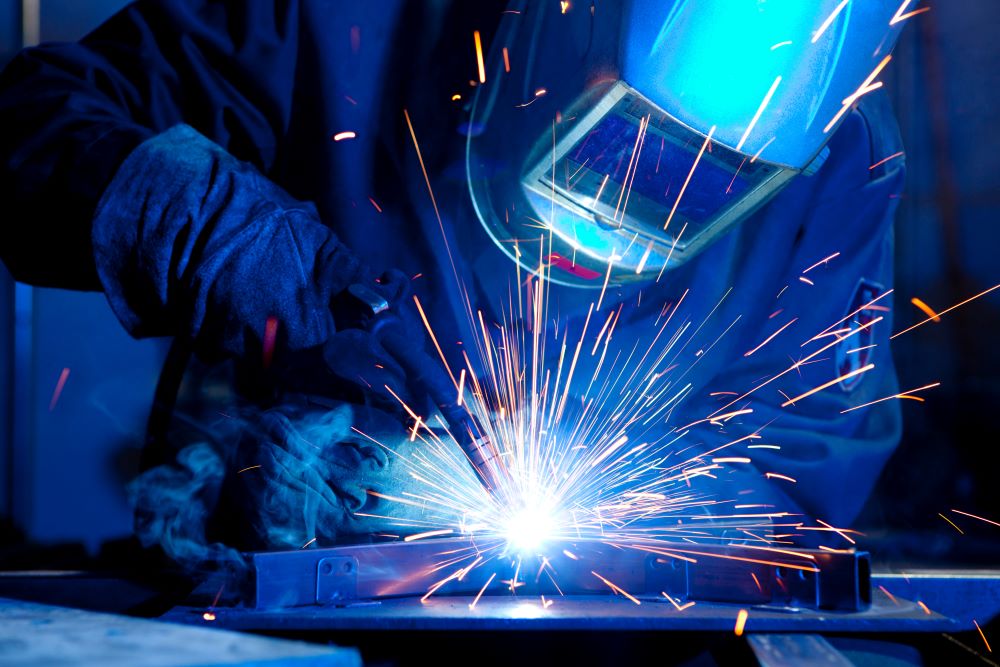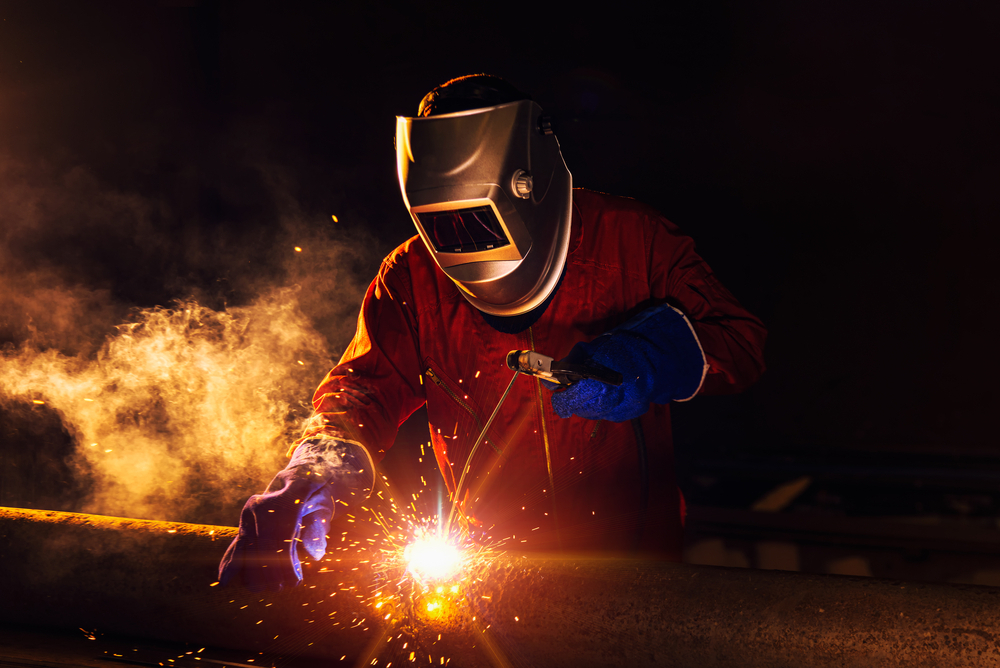Typical Welding Repair Work Issues and Exactly How to Address Them Properly
Welding repair services usually come across a variety of problems that can threaten the honesty of the last product. Usual problems include inadequate penetration, porosity, and imbalance, to name a few. Each problem offers unique challenges that need particular approaches for resolution. Recognizing these concerns is necessary for welders intending to enhance their results and abilities. This conversation will certainly explore these typical welding repair work concerns and effective methods to resolve them.
Inadequate Infiltration
Insufficient penetration occurs when the weld steel stops working to totally fuse with the base material, leading to weak joints and possible structural failings. This issue often originates from inadequate heat input, inaccurate electrode angle, or improper welding speed. Welders may encounter insufficient penetration as a result of a mistake of the essential specifications for a particular material thickness or kind. In addition, contamination on the base product's surface can prevent reliable bonding, worsening the trouble. To deal with insufficient penetration, welders should guarantee appropriate setups on their equipment and keep a tidy job surface area. Routine inspection of welds is advised to determine any kind of deficiencies early, enabling prompt corrections and the avoidance of jeopardized architectural honesty in welded assemblies.
Porosity
Porosity is a typical issue in bonded joints that shows up as small gas bubbles trapped within the weld metal. This flaw can jeopardize the honesty of the weld, bring about reduced stamina and potential failing under tension. Montana Mobile Welding and Repair Belgrade. Porosity normally emerges from contamination, dampness, or inappropriate welding methods, which enable gases to leave right into the liquified weld pool. To address porosity, welders ought to assure proper surface preparation, keep a clean working environment, and utilize ideal welding specifications. Additionally, picking the right filler product and shielding gas can alleviate gas entrapment. Regular examination and testing of welds can help recognize porosity early, guaranteeing timely rehabilitative actions are taken, thus maintaining the high quality and integrity of the welded structure
Misalignment
Imbalance in welding can develop from numerous aspects, consisting of incorrect arrangement and thermal expansion. Understanding the source is vital for reliable resolution. Numerous improvement methods are offered to realign parts and ensure architectural integrity.
Reasons for Misalignment
Welding imbalance often originates from a selection of underlying problems that can endanger architectural honesty. One primary cause is inappropriate fit-up of parts prior to welding, which can cause voids and unequal surface areas. Variants in thermal growth during the welding process can likewise result in distortion, specifically if the materials being joined have different coefficients of expansion. In addition, poor securing and fixturing may fall short to hold parts safely in position, leading to motion throughout welding. Improperly maintained devices, including welding machines and devices, might introduce variances in the weld grain, more adding to imbalance. Lastly, operator error, stemming from inadequate training or experience, can also play a substantial duty in producing misaligned welds.
Improvement Strategies Readily Available
Dealing with misalignment effectively calls for a mix of corrective techniques customized to the certain problems at hand. One usual method is making use of components or jigs to hold elements in the correct position during welding, ensuring consistent positioning. Furthermore, pre-heating the products can assist lower distortion and boost fit-up. For considerable misalignment, mechanical adjustment methods, such as using hydraulic jacks or clamps, can be utilized to deal with the placement prior to welding. Post-weld heat treatment may also be essential to eliminate stress and anxieties brought on by imbalance. Ultimately, cautious inspection and change throughout the arrangement stage can protect against imbalance issues from ending up being considerable problems, promoting a smoother welding procedure and boosting overall architectural stability.
Distortion
Distortion is a typical difficulty in welding that can emerge from various variables, consisting of irregular home heating and air conditioning. Understanding the causes of distortion is important for carrying out reliable prevention techniques. Addressing this concern not only enhances structural stability but additionally enhances the overall high quality of the weld.
Reasons for Distortion
When subjected to the intense warmth of welding, products frequently undergo adjustments that can cause distortion. This sensation mostly develops from thermal growth and tightening during the welding procedure. As the weld area warms up, the material expands; upon cooling, it gets, which can develop inner stresses. In enhancement, irregular heating across a work surface can worsen these tensions, resulting in bending or bending. The sort of material also plays a considerable function; metals with varying thermal conductivity and coefficients of development may react differently, bring about uncertain distortions. Bad joint layout and poor fixturing can contribute to imbalance throughout welding, enhancing the probability of distortion. Understanding these causes is crucial for efficient welding repair service and prevention techniques.
Avoidance Techniques
Efficient avoidance methods for distortion during welding concentrate on regulating warm input and making sure appropriate joint design. Maintaining a constant heat input helps to reduce thermal expansion and contraction, which can result in distortion. Making use of methods such as pre-heating the work surface can likewise lower the temperature gradient, promoting consistent heating. In addition, picking proper joint designs, such as T-joints or lap joints, can improve security and reduce stress and anxiety concentrations. Applying proper fixturing to secure the work surfaces in place even more help in maintaining positioning during the welding procedure. Staggered welding sequences can disperse warm a lot more uniformly, stopping localized distortion. By using these strategies, welders can considerably reduce the likelihood of distortion and boost the general quality of their welds.
Cracking
Breaking is a common concern encountered in welding repair services, often arising from numerous elements such as incorrect have a peek here air conditioning prices, product option, or inadequate joint preparation. The incident of fractures can considerably endanger the integrity of the weld, causing prospective failures throughout operation. To address this problem, welders need to initially examine the source, making sure that materials are compatible and properly selected for the details application. Furthermore, regulating the cooling price during the welding process is vital; quick cooling can generate anxiety and result in cracking. Correct joint design and prep work additionally add to minimizing the danger. Applying these techniques can enhance weld quality and durability, ultimately lowering the probability of cracking in finished weldments.

Incomplete Fusion
A substantial concern in welding repairs is incomplete blend, which use this link takes place when the weld metal does not sufficiently bond with the base material or previous weld passes - Montana Mobile Welding and Repair Belgrade Welding. This issue can bring about weak points in the joint, potentially jeopardizing the integrity of the welded structure. Aspects adding to insufficient fusion consist of insufficient warm input, improper welding technique, and contamination of the surface areas being signed up with. To resolve this problem effectively, welders ought to guarantee correct pre-weld cleaning and surface prep work, along with readjust their welding specifications to achieve sufficient penetration and blend. Regular examination throughout the welding process can also aid identify insufficient blend early, permitting for prompt corrective measures to enhance the overall top quality of the weld
Overheating
While welding repair services can enhance architectural integrity, overheating offers a considerable challenge that can lead to material degradation. Too much heat during welding can modify the mechanical residential or commercial properties of steels, leading to reduced strength, enhanced brittleness, and warping. This sensation is especially essential in high-stress applications where architectural dependability is paramount. Identifying getting too hot can include aesthetic assessments for staining or distortion, along with keeping an eye on temperature during the welding procedure. To alleviate the risks connected with getting too hot, welders need dado laser welder to employ proper methods, such as managing warm input, adjusting traveling speed, and utilizing suitable filler products. Furthermore, executing pre- and post-weld warmth therapies can help recover product homes and improve the total quality of the repair, making certain lasting efficiency and security.
Frequently Asked Questions
What Are the Usual Signs of a Welding Problem?

Exactly How Can I Evaluate My Welds for Quality?
To check welds for top quality, one can utilize visual assessments, ultrasonic testing, and radiographic techniques. Each strategy ensures architectural stability, recognizes defects, and confirms adherence to defined requirements, eventually enhancing the dependability of the welded joints.
What Safety and security Safety Measures Should I Take While Welding?
When welding, one need to focus on safety by using appropriate personal protective devices, guaranteeing correct air flow, safeguarding flammable materials away, preserving a clean work area, and knowing surroundings to protect against crashes and injuries.
Can I Fix a Weld Without Redesigning the Entire Joint?
Repairing a weld without remodeling the whole joint is feasible, depending upon the damages (Montana Mobile Welding and Repair Welding). Strategies such as grinding, including filler material, or making use of a welding procedure can efficiently resolve certain flaws while preserving the surrounding framework
What Devices Are Vital for Reliable Welding Fixes?
Essential devices for efficient welding fixings consist of a welding machine, wire brush, grinder, safety gear, clamps, and filler products. Each tool plays a vital duty in guaranteeing quality and safety and security during the repair procedure. Porosity commonly emerges from contamination, dampness, or improper welding techniques, which enable gases to escape right into the molten weld pool. Improperly conserved equipment, including welding equipments and tools, might introduce variances in the weld grain, further contributing to imbalance. When subjected to the intense heat of welding, products typically undergo adjustments that can lead to distortion. Breaking is an usual issue encountered in welding fixings, often resulting from numerous variables such as inappropriate air conditioning prices, product choice, or insufficient joint preparation. A substantial issue in welding repairs is insufficient fusion, which happens when the weld metal does not sufficiently bond with the base product or previous weld passes.